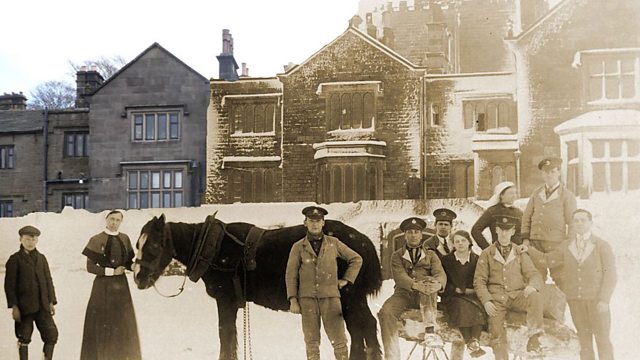Longshaw, Derbyshire: Sphagnum Moss For Wounds
Antiseptic qualities of sphagnum moss helped save many lives
Sphagnum moss gathered from the peat bogs that bordered the Longshaw estate in the Peak District helped saved the lives of men returning from the trenches in World War One. Doris Elliot a volunteer nurse at Longshaw Military Hospital told her granddaughter how she used to go out on the moors to pick sphagnum moss.
The moss is now used mostly for hanging baskets because it’s so absorbent but it also has antiseptic qualities which made it a great substitute for cotton in thick bandages.
The war took place before the discovery of penicillin, so its ability to both staunch open wounds and inhibit bacterial growth made it indispensable.
It would be shaken out, to remove debris and even dead frogs, squeezed to reduce the moisture and laid out on dust sheets to dry in the sun. It was sewn into muslin bags and reduced the need to change dressings so often; saving time for busy nurses, lessening distress to patients and reducing laundry costs.
It was collected on an industrial scale by villagers across Britain, America and Canada. By the end of the war over a million pads a month were being made in Britain.
Location: Longshaw Shooting Lodge, Peak District National, Sheffield, Derbyshire Park S11 7TZ
Image: Longshaw Shooting Lodge, courtesy of Beverley Hardy
Duration:
This clip is from
Featured in...
![]()
±«Óãtv Radio Sheffield—World War One At ±«Óãtv
Places around Sheffield that tell a story of World War One
![]()
Medicine—World War One At ±«Óãtv
Hospitals, medical pioneers and the nursing contribution
More clips from World War One At ±«Óãtv
-
![]()
The loss of HMY Iolaire
Duration: 18:52
-
![]()
Scotland, Slamannan and the Argylls
Duration: 07:55
-
![]()
Scotland Museum of Edinburgh mourning dress
Duration: 06:17
-
![]()
Scotland Montrose 'GI Brides'
Duration: 06:41







